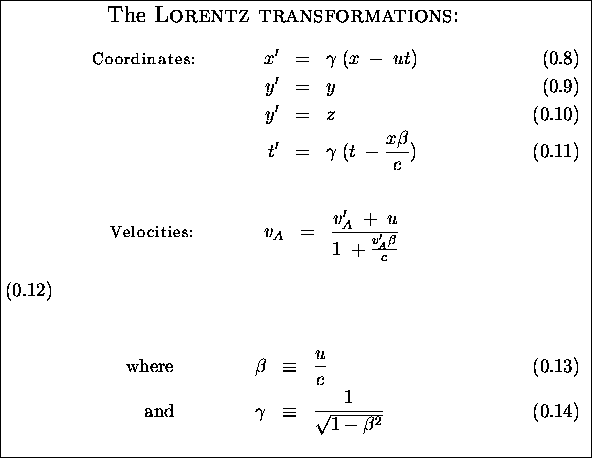
The problem is, it doesn't work for light. Without any stuff with respect to which to measure relative velocity, one person's vacuum looks exactly the same as another's, even though they may be moving past each other at enormous velocity! If so, then the Maxwell equations tell both observers that they should ``see" the light go past them at c, even though one observer might be moving at ½c relative to the other!
The only way to make such a description self-consistent (not to say reasonable) is to allow length and duration to be different for observers moving relative to one another. That is, x' and t' must differ from x and t not only by additive constants but also by a multiplicative factor.
For æsthetic reasons I will reproduce here the equations that provide such coordinate transformations; the derivation will come later.

Note that the ``prime" is on the right-hand side
of the velocity transformation and we have assumed (for simplicity)
that vA and v'A
are both in the x direction
(the same as u). The ubiquitous factor
 is equal to 1 for vanishingly small relative velocity u
and grows without limit as
is equal to 1 for vanishingly small relative velocity u
and grows without limit as
 .
In fact, if u
ever got as big as c then
.
In fact, if u
ever got as big as c then
 would ``blow up"
(become infinite) and then (worse yet) become imaginary
for u > c.
would ``blow up"
(become infinite) and then (worse yet) become imaginary
for u > c.